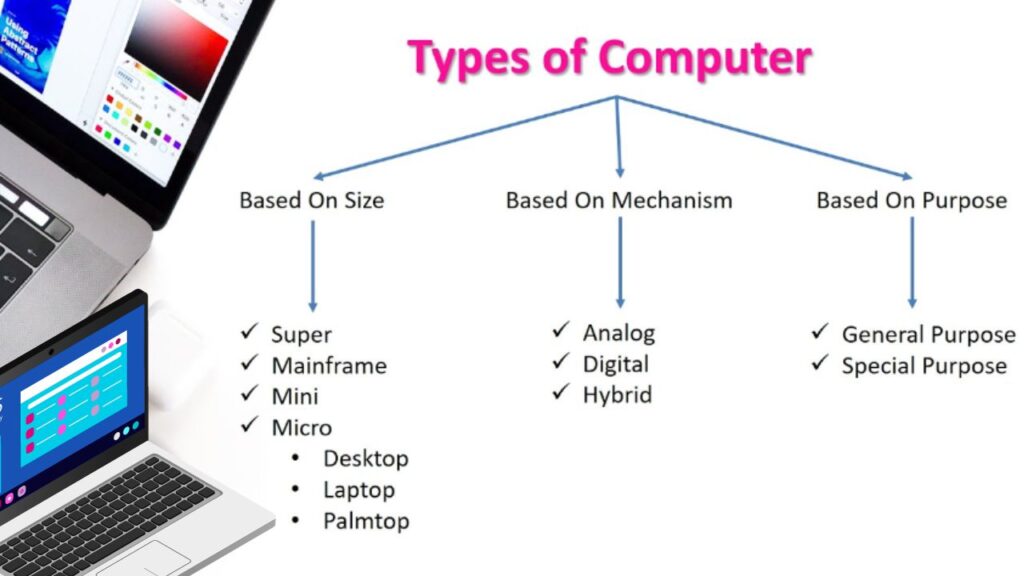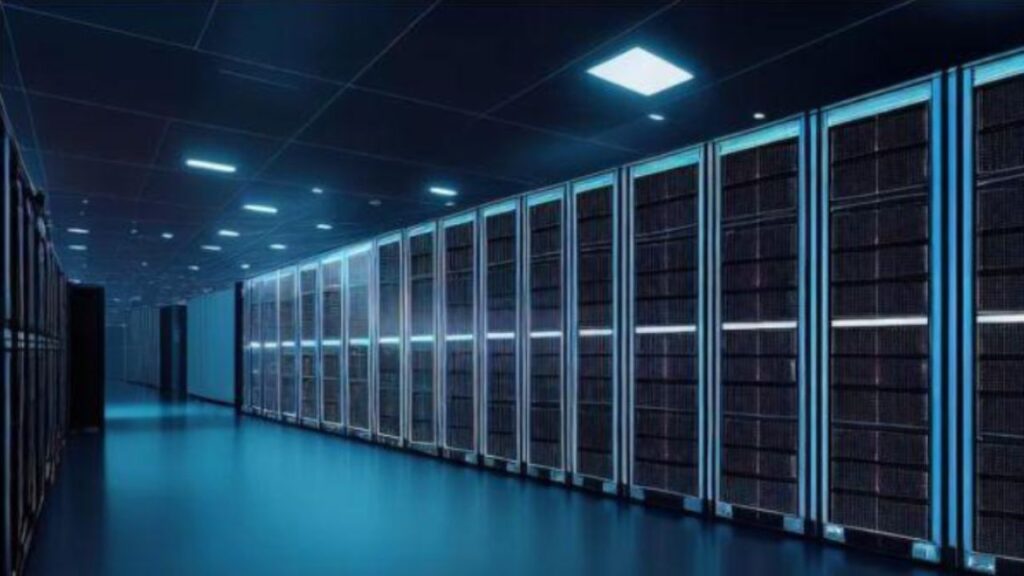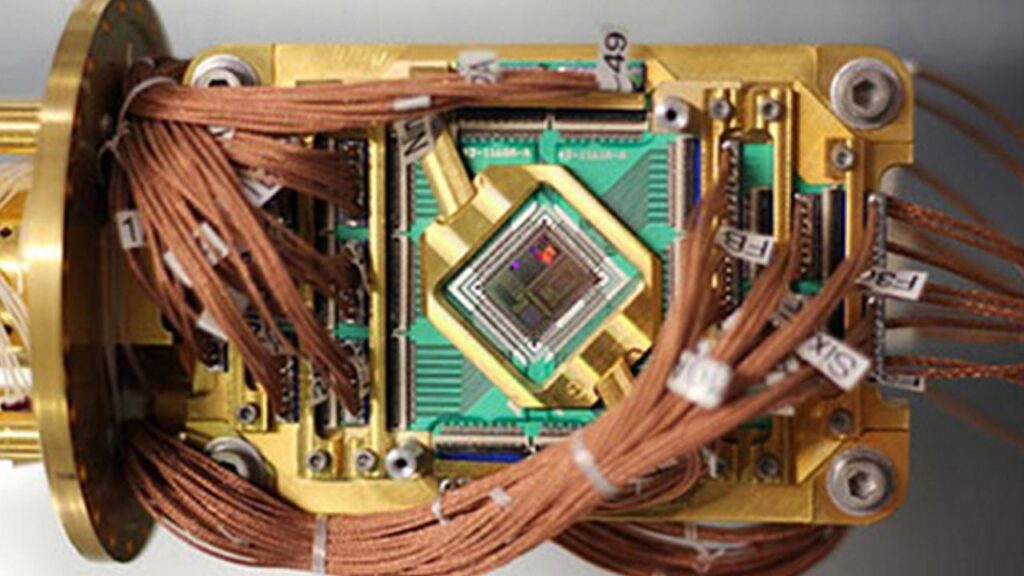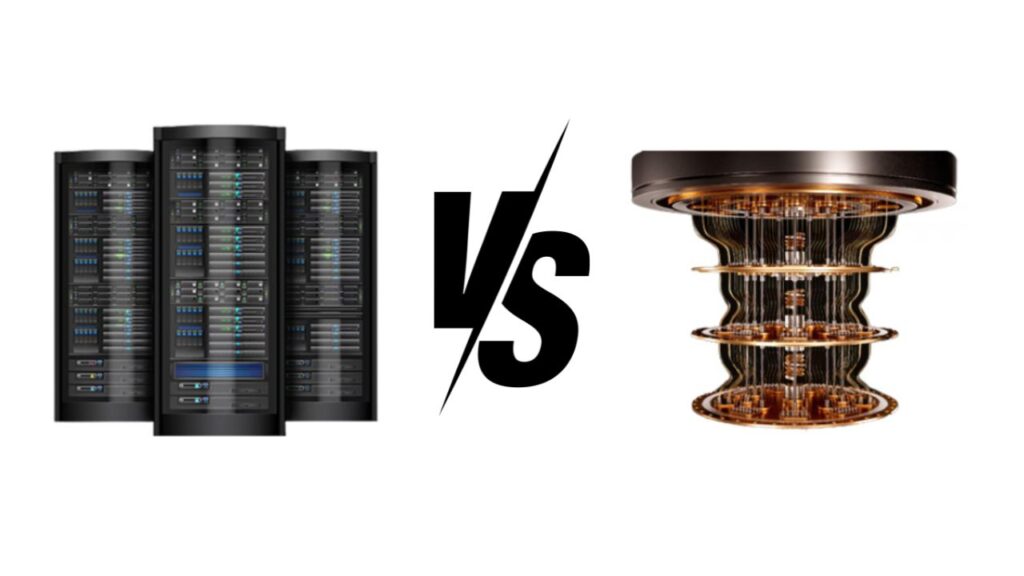What is a Computer?
The computer, a revolutionary electrical device, has a rich history dating back to its conceptualization by Charles Babbage in 1822. This remarkable invention has since evolved into an integral part of our modern world, facilitating a wide array of tasks and operations.
At its core, a computer functions as an electronic device that processes information.
It does so by following a systematic sequence: taking input data from various input devices, storing and processing this data, and finally, delivering the results through output devices. The brain behind this entire process is known as the Central Processing Unit (CPU), often referred to as the computer’s “brain.”
The computer’s versatility is one of its defining features. It has been meticulously designed to execute an extensive range of operations and tasks based on the instructions provided by users. These tasks can span from fundamental functions like word processing to more intricate processes such as graphic design, gaming, and internet browsing.
Components of a Computer
A typical computer system consists of several key components:
- Memory (RAM): Temporary storage for data and program instructions that the CPU needs for processing.
- Storage (Hard Drive/SSD): Persistent storage for long-term data retention. They are those, which are used to store the data. Memory are of two types namely, primary memory and secondary memory.
- Motherboard: The main circuit board that connects and allows communication between all components.
- Hardware Parts: Parts of a computer system which can be touched or seen including Input and Output devices.
- Software Parts: Parts of a computer which cannot be seen or touched. It is a group of computer programs and instructions.
- Input Devices: They are those, which are used to provide the input like keyboard, mouse, etc. Such as keyboards, mouse, and touchscreens, allow users to provide input to the computer.
- Output Devices: They are those, which are used to display or show the output like speakers, screens, etc. Like monitors and printers, display or produce the results of computer processing.
- Central Processing Unit (CPU): It is the brain of the computer, performing calculations and executing instructions. The CPU executes instructions and carries out calculations.
Types of Computers

Computers come in various forms and sizes, each designed to meet specific needs. Two of the most powerful and advanced types of computers are supercomputers and quantum computers.
1. Supercomputers
2. Quantum computers
3. Mini computers
4. Mainframe computers
5. Workstation
6. Microcomputers
What is a Supercomputer?

In the realm of computing history, a significant milestone was reached in 1964 when Seymour Cray and Boris Babayan introduced the first-ever supercomputer known as the CDC 6600.
A supercomputer represents a distinct category of computing machinery, setting itself apart from the personal computers we commonly find in our homes. The hallmark of a supercomputer lies in its astonishing computing speed, which exceeds that of personal computers by a factor of a thousand.
It possesses the unparalleled ability to execute even the most formidable tasks in a matter of seconds, tasks that would require an extended duration on standard home computers.
In terms of physical dimensions, a supercomputer is substantial, occupying a space equivalent to that of an entire room. This grand scale is essential for the high-performance computing capabilities it delivers.
Supercomputers find their niche in applications where real-time, up-to-the-second information is of paramount importance, such as the live updates received from satellites.
Their deployment is predominantly in the realms of scientific and engineering applications, where their immense computational prowess is harnessed to tackle complex problems and simulations.
The performance of supercomputers is quantified using a metric known as “Flops” (Floating-Point Operations Per Second), which measures the sheer number of mathematical calculations a supercomputer can perform in a single second. It is a testament to their incredible speed and processing power.
Given their extraordinary capabilities, supercomputers emerge as the preferred choice for tasks in the domains of science and engineering. Their remarkable processing power, extensive storage capacity, and capacity to manage vast amounts of data and users make them indispensable in these fields.
In essence, a supercomputer is characterized by its exceptional attributes across various parameters, including processing power, storage capacity, user handling capacity, and more.
Some Key Characteristics of Supercomputers:
- Parallel Processing: Supercomputers excel in parallel processing, where multiple processors work together to perform computations simultaneously.
- Massive Data Throughput: They have high data throughput capabilities, making them ideal for handling extensive datasets.
- Specialized Architecture: Supercomputers often use specialized hardware and software to optimize performance for specific applications.
- Expensive: Building and maintaining supercomputers is costly, often requiring significant financial investment.
What is a Quantum Computer?

In the 1980s, the concept of Quantum Computers was pioneered by the brilliant minds of Richard Feynman and Yuri Manin.
A Quantum computer stands as a remarkable device that conducts calculations and stores data based on the intricate principles of quantum mechanics. It possesses an unparalleled capacity to tackle complex computational problems with unprecedented efficiency, surpassing the capabilities of classical computers.
What sets Quantum computers apart is their utilization of quantum digits, often referred to as QUBITS, as opposed to the binary digits or bits (0 and 1) used in conventional computers. QUBITS possess the astonishing ability to exist in multiple states simultaneously, a phenomenon that underpins their extraordinary computational power.
Quantum computers represent a complete departure from the traditional computing paradigm, delivering processing speeds that outstrip even the most potent supercomputers. This heightened performance makes them indispensable tools across a multitude of fields in technology and science.
Quantum computers find extensive applications in diverse areas, including artificial intelligence, where they facilitate rapid data analysis and pattern recognition, enhancing machine learning capabilities.
In the realm of cybersecurity, their advanced cryptographic capabilities play a pivotal role in safeguarding sensitive information. Furthermore, quantum computers contribute to solar capture technologies, optimizing energy conversion processes.
In weather forecasting, they empower more accurate and detailed predictive models. Their impact extends to drug development, where they expedite complex simulations and research, ultimately leading to innovative medical solutions.
Here are some key characteristics of quantum computers:
- Quantum Bits (Qubits): Qubits can exist in multiple states simultaneously, enabling quantum computers to perform complex calculations more efficiently.
- Quantum Entanglement: Qubits can be entangled, allowing for faster and more intricate computations.
- Quantum Superposition: Quantum computers can explore multiple solutions to a problem simultaneously, significantly speeding up the solving of certain mathematical and scientific problems.
- Challenges: Quantum computers are still in the experimental stage, facing challenges like error correction and scalability.
Difference between Supercomputers and Quantum Computers
| Parameter | Super Computers | Quantum Computers |
| Physical size | Supercomputers are larger in size. | Quantum computers are smaller in size. |
| Speed | Supercomputers are slower than Quantum computers. | Quantum computers are faster than Supercomputers. |
| Operational technique | Use classical bits. | Use qubits or quantum bits. |
| Performance criteria | Supercomputers perform the computations by using classical physics. | Quantum computers perform the computations by using quantum mechanics. |
| Energy consumption | Energy consumption is very high due to a large number of components. | Quantum computers use energy-efficient algorithms. |
| Limitations | limited by physical constraints such as heat dissipation and power consumption | limited by qubit’s coherence and error rates. |
| Focus | Focused on solving problems with existing algorithms and optimization techniques. | Focused on developing new algorithms and optimization techniques. |
| Computational algorithm | Supercomputers use the deterministic algorithm for computations. | Quantum computers use the probabilistic algorithm for computations. |
| Real-time data analysis | Real-time data analysis and processing. | Currently not suitable for real-time applications. |
| Processing | Supercomputers process the data sequentially. | Quantum computers use leverage quantum parallelism. |
| Memory | Use the multiple levels of memory hierarchy to optimize performance. | Limited memory and need more approaches for data storage. |
| Technology | Relatively stable and have well-established technology. | A new and rapidly evolving technology. |
| Design | Supercomputers are designed for diverse applications. | Quantum computers are specialized for specific tasks. |
| Program | Easy to understand the program of Supercomputers. | Require quantum-specific programming for Quantum computers. |
| Cooling requirements | Supercomputers require extensive cooling. | Relatively low temperatures are required for quantum computers. |
| Scalability | limited scalability. | potentially scalable. |
| Range | Supercomputers have a finite input-output range. | Quantum computers have an unbounded input-output range. |
| Cost | lower cost. | higher in cost. |
| Footprint | A large physical footprint. | A small physical footprint. |
| Data security | A limited impact on data security. | The potential to revolutionize data security. |
| Upgrade | Supercomputers can be upgraded incrementally. | Quantum computers require major technological advancements for improvement. |
Conclusion:
In 1822, Charles Babbage introduced the world to the computer, an electronic marvel that revolutionized the way we process information. This ingenious device takes input data from various input sources, processes it diligently, preserves the outcomes, and then delivers the results through output devices.
All of this intricate processing is orchestrated by the Central Processing Unit (CPU). Fast forward to the modern era, and we encounter two remarkable advancements in computing technology: supercomputers and quantum computers.
A supercomputer stands as an extraordinary breed of computing machinery, boasting processing speeds that leave ordinary home personal computers in the dust by a factor of a thousand. It possesses the astounding capability to accomplish even the most formidable tasks in a fraction of the time it would take standard computers.
These supercomputers are not your run-of-the-mill devices; they are massive in size, occupying entire rooms. Their value shines in scenarios where real-time data is paramount, such as the constant updates received from satellites. Supercomputers find their niche in applications that demand high-performance computing, particularly in the realms of engineering and scientific research.
On the other end of the spectrum, we have quantum computers, a truly cutting-edge form of computational technology. Unlike traditional computers, quantum computers harness the principles of quantum mechanics to conduct calculations and store data. Their prowess in solving intricate computational problems is unparalleled.
Quantum computers take a quantum leap by employing quantum digits, often called QUBITS, instead of binary digits (0 and 1). What sets QUBITS apart is their ability to exist in multiple states simultaneously, a feat that defies the binary limitations of classical computing. Comment here.
For more article visit – peoplelaptop

